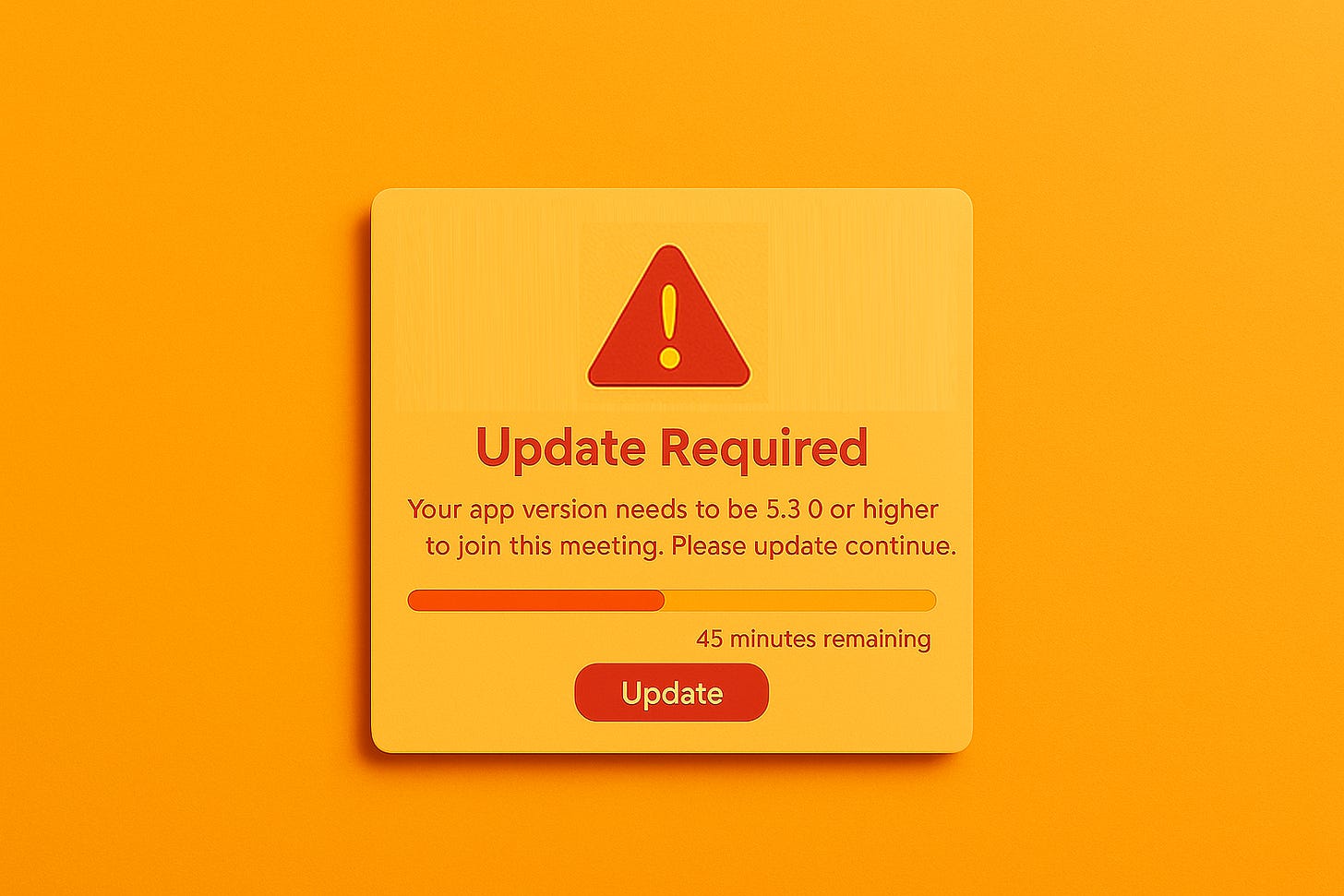Whose Metrics Are These Anyway?
When "working as designed" fails real people
You know the moment.
You are about to join an interview. The window opens. Then it freezes. A mandatory update. No postpone button. No way out.
Or, you and your partner finally have two hours to unwind. Wine poured. Cheese tray assembled. The final episodes of your favorite show are queued up, until your TV declares: “Firmware update required. Now.”
These …
Keep reading with a 7-day free trial
Subscribe to Making an Impact: Leadership, Design, and Change with Twisha to keep reading this post and get 7 days of free access to the full post archives.


